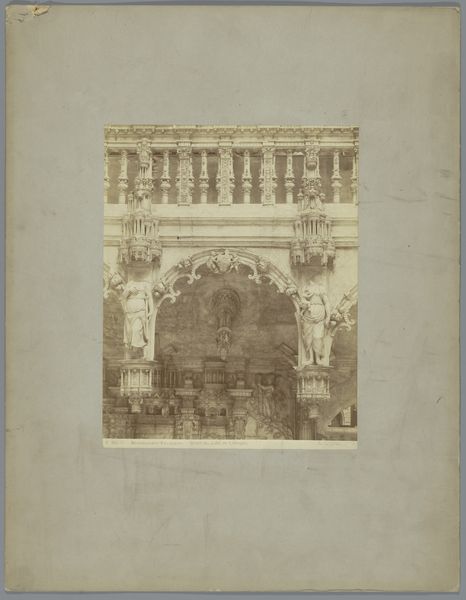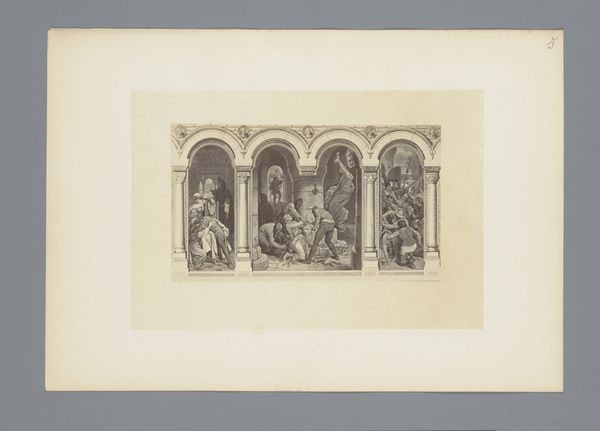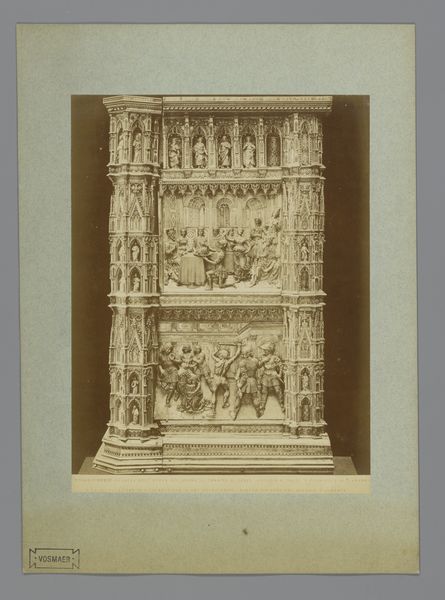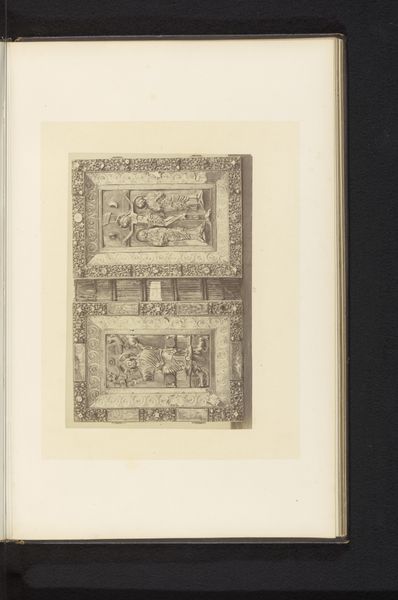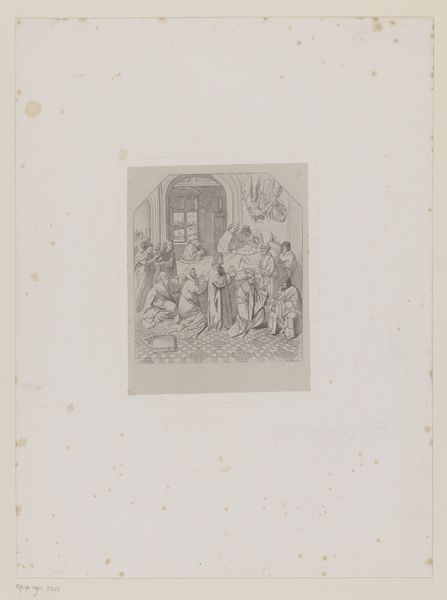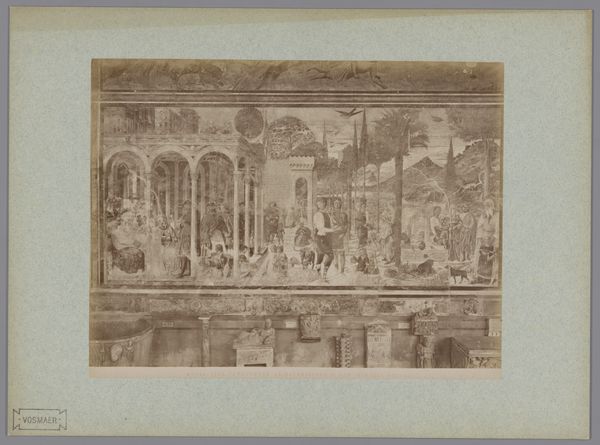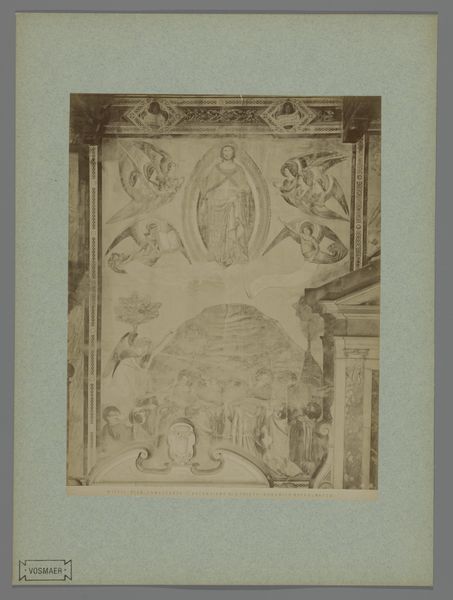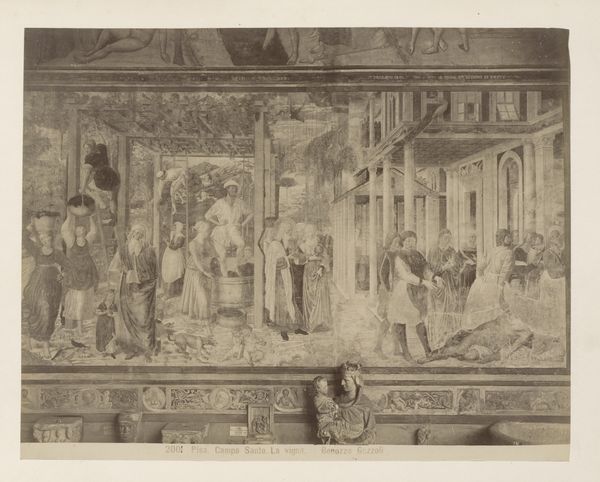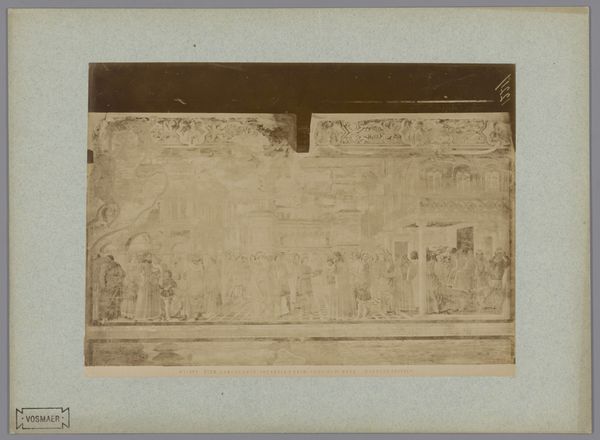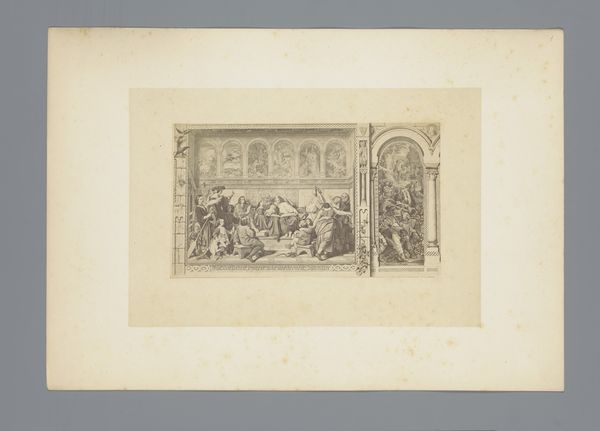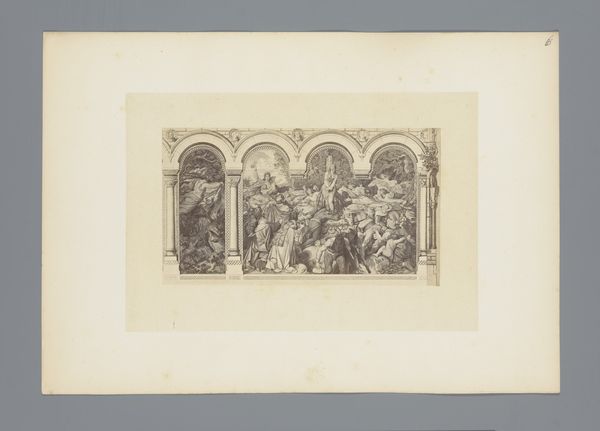
Fotoreproductie van fresco met scènes uit de levens van Johannes de Doper en Maria naar Domenico Ghirlandaio in de Santa Maria Novella te Florence, Italië 1857 - 1900
0:00
0:00
print, fresco, photography
#
narrative-art
# print
#
figuration
#
fresco
#
11_renaissance
#
photography
#
history-painting
#
italian-renaissance
#
realism
Dimensions: height 256 mm, width 193 mm, height 358 mm, width 258 mm
Copyright: Rijks Museum: Open Domain
Curator: What a marvelously detailed photograph! It captures Domenico Ghirlandaio’s fresco cycle in the Santa Maria Novella in Florence. This image, produced between 1857 and 1900 by Fratelli Alinari, freezes a Renaissance masterpiece. Editor: My goodness, it's like a silent film playing out across the wall! There's so much life teeming within those architectural borders—the everyday bustling around these profound biblical moments is fascinating! Curator: Indeed. Ghirlandaio's narrative art here blends the sacred with the secular. The cycle recounts scenes from the lives of John the Baptist and the Virgin Mary, painted during the Italian Renaissance. You see families dressed in finery watching events unfolding. It places the viewer almost in that world. Editor: Absolutely, and consider what it means to visually document a fresco like this! The photograph not only preserves the fresco but, in a way, democratizes it. Folks who couldn't travel to Florence could still engage with these humanist ideals so central to the Renaissance. It's powerful. The use of print media really is amazing. Curator: Exactly. Before photography, these frescoes were known through sketches or engravings, losing some of their essence. Here, the photographic realism captures nuances, bringing Ghirlandaio’s detailed figures and perspective to a wider audience, echoing that movement's values on knowledge and accessibility. Editor: I agree! This work provides us with insights into both the High Renaissance and 19th-century perspectives, a doubling effect of artistic interpretation across centuries. The way we document shapes how we access the world. A print like this turns a cathedral’s interior public, or rather more public, and is shaped and influenced through history! It begs consideration. Curator: The print does more than just represent the frescoes; it enters the complex socio-political discussions surrounding art. This photographic print makes the sacred tales accessible for discussion beyond their religious origins, fostering a visual dialogue about religion, representation, and reality, perhaps what these two figures intended all along. Editor: Yes, by taking on a painting of the frescoes the Alinari brothers started to question a host of issues on the history of that original painting, its importance, and even more the concept of narrative itself, thus bringing in new dimensions for all those viewers willing to contemplate the piece.
Comments
No comments
Be the first to comment and join the conversation on the ultimate creative platform.


